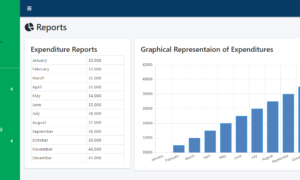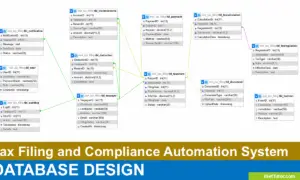Top AI-Powered Hardware Projects
Introduction
Table of Contents
Artificial Intelligence (AI) is transforming the way we interact with technology, and when combined with hardware, it opens up new possibilities for innovation. AI-powered hardware integrates intelligent algorithms with physical devices, allowing them to process data, make decisions, and perform tasks autonomously. This integration is not just a futuristic concept but a rapidly growing field that is already impacting various industries.
Why AI and Hardware Integration is a Growing Field
The demand for smarter, more efficient devices is driving the growth of AI and hardware integration. From smart home systems that adjust lighting and temperature based on our preferences, to advanced healthcare devices that monitor our health in real-time, AI-powered hardware is becoming an essential part of our everyday lives. As technology evolves, the capabilities of these intelligent devices will continue to expand, making them more intuitive and responsive to our needs.
Benefits of Combining AI with Physical Devices for Real-World Applications
The combination of AI and hardware brings numerous benefits. It enhances the functionality of devices by enabling them to learn from data, adapt to changing conditions, and perform complex tasks without human intervention. For example, AI-powered security cameras can detect unusual activity and alert homeowners, while autonomous vehicles use AI to navigate roads safely. By merging AI with hardware, we can create smarter solutions that improve efficiency, safety, and convenience across various sectors, including healthcare, manufacturing, transportation, and beyond.
These advancements in AI-powered hardware are setting the stage for a future where intelligent devices become seamlessly integrated into our daily routines, making our lives easier and more connected.
Understanding AI and Hardware Integration
Definition of Artificial Intelligence and Its Capabilities
Artificial Intelligence (AI) refers to the ability of machines to perform tasks that typically require human intelligence. These tasks include learning from experience, recognizing patterns, understanding natural language, and making decisions. AI systems use algorithms and large amounts of data to simulate human cognitive functions. This allows them to improve their performance over time, predict outcomes, and respond to different situations intelligently. AI’s capabilities range from simple automation to complex problem-solving, making it a versatile technology in many fields.
Overview of Hardware Used in AI Applications
To bring AI to life, specific hardware components are necessary. These include:
- Sensors: Devices that collect data from the environment, such as cameras for visual data, microphones for sound, and motion sensors for detecting movement. Sensors act as the eyes and ears of AI systems, providing the raw data needed for analysis.
- Processors: Powerful processors, such as Graphics Processing Units (GPUs) and Tensor Processing Units (TPUs), are crucial for handling the large amounts of data and complex calculations involved in AI. These processors accelerate the training of AI models and enable real-time data processing.
- Microcontrollers: Small, low-power devices that control the operation of embedded systems. Microcontrollers are often used in IoT devices to execute specific tasks, such as monitoring temperature or controlling motors, based on AI algorithms.
How AI Algorithms and Hardware Work Together to Enhance Functionality
AI algorithms and hardware components work together to create intelligent systems. The process typically starts with data collection, where sensors gather information from the physical world. This data is then processed by AI algorithms, which analyze and interpret it to make informed decisions. The processors handle the heavy computational tasks required for this analysis, ensuring that the AI can function efficiently and accurately.
For example, in an AI-powered security camera, the camera (sensor) captures video footage, which is then analyzed by AI algorithms running on a powerful processor. The AI can detect unusual activities, such as a person entering a restricted area, and send an alert to the user. By integrating AI with hardware, these systems can operate autonomously, providing real-time insights and actions that enhance functionality and user experience.
The synergy between AI and hardware enables the creation of smarter, more responsive devices that can transform industries and improve our daily lives.
Tools and Platforms for AI Hardware Projects Ideas
Overview of Popular Microcontrollers and Single-Board Computers
Microcontrollers and single-board computers (SBCs) are essential tools in AI hardware projects, providing the computing power needed to run AI algorithms. Some popular options include:
- Arduino: A widely used microcontroller platform known for its simplicity and versatility. Arduino boards are great for beginners and can be used in a variety of projects, from simple automation tasks to more complex sensor data processing.
- Raspberry Pi: A powerful and affordable single-board computer, Raspberry Pi is a popular choice for AI projects. It offers more processing power than typical microcontrollers, making it suitable for running machine learning models and handling more demanding tasks, such as image and video processing.
- NVIDIA Jetson Nano: Designed specifically for AI and machine learning applications, the Jetson Nano is a powerful single-board computer that can run AI frameworks and process data in real-time. It’s ideal for projects that require deep learning capabilities, such as robotics, smart cameras, and IoT devices.
- ESP32: A microcontroller with integrated Wi-Fi and Bluetooth, ESP32 is known for its low cost and low power consumption. It’s widely used in IoT projects and can support AI applications, such as speech recognition and image processing, using edge computing.
AI Frameworks and Libraries for Hardware Integration
To develop AI applications on hardware, various frameworks and libraries are available that make the integration process easier:
- TensorFlow Lite: A lightweight version of Google’s TensorFlow library, TensorFlow Lite is optimized for mobile and embedded devices. It allows developers to run machine learning models on low-power devices, making it ideal for AI hardware projects.
- PyTorch: A popular open-source deep learning framework, PyTorch is used for developing and training AI models. It supports deployment on various hardware platforms, including edge devices, making it versatile for AI applications in robotics and IoT.
- OpenCV: An open-source computer vision library that provides tools for real-time image and video processing. OpenCV can be used in combination with other AI frameworks to develop applications that require object detection, facial recognition, and motion tracking.
- Keras: A high-level neural networks API, Keras is easy to use and integrates well with TensorFlow. It’s suitable for quickly prototyping and deploying AI models on different hardware platforms.
Cloud-Based AI Services for Hardware Projects
Cloud-based AI services offer scalable computing power and advanced machine learning capabilities that can be integrated with hardware projects. These services can handle the heavy lifting of AI processing, allowing devices to offload tasks to the cloud. Some popular cloud-based AI services include:
- Google Cloud AI: Provides a suite of AI tools and services, including machine learning APIs, automated machine learning (AutoML), and pre-trained models for tasks like image recognition, natural language processing, and speech-to-text. Google Cloud AI can be used to enhance hardware projects by providing powerful AI capabilities.
- Amazon Web Services (AWS) AI/ML: AWS offers a range of AI and machine learning services, such as Amazon SageMaker for building, training, and deploying models, and AWS IoT for connecting devices to the cloud. These services can be integrated into hardware projects to provide robust AI functionality.
- Microsoft Azure AI: Azure provides various AI services, including Azure Machine Learning, Cognitive Services, and IoT Hub. These tools allow developers to build, train, and deploy AI models, as well as connect and manage IoT devices, making it a strong platform for AI hardware integration.
- IBM Watson: A cloud-based AI platform that offers a range of services, including Watson Assistant for building conversational interfaces, Watson Visual Recognition for image analysis, and Watson IoT for connecting and managing devices. IBM Watson can be used to bring advanced AI capabilities to hardware projects.
By using these tools and platforms, developers can create powerful AI-integrated hardware projects that leverage both local processing and cloud-based capabilities to deliver innovative and intelligent solutions.
Top AI-Powered Hardware Project Ideas
- Smart Home Automation System
- Description: Create a system that uses AI to control home appliances based on user preferences and behaviors. It can adjust lighting, temperature, and security settings automatically.
- Tools: Arduino or Raspberry Pi, sensors (temperature, motion), AI frameworks (TensorFlow Lite), cloud services (AWS IoT).
- AI-Based Surveillance Camera
- Description: Develop a security camera system with AI capabilities to recognize faces, detect unusual activities, and send alerts in real-time.
- Tools: NVIDIA Jetson Nano, high-resolution cameras, OpenCV, TensorFlow.
- AI-Powered Healthcare Monitoring Device
- Description: Design a wearable device that monitors vital signs and uses AI to analyze health data, providing real-time alerts for anomalies.
- Tools: Arduino or ESP32, biosensors (heart rate, temperature), TensorFlow Lite, mobile app integration.
- Autonomous Delivery Drone
- Description: Build a drone that uses AI to navigate and deliver packages autonomously, avoiding obstacles and optimizing flight paths.
- Tools: NVIDIA Jetson Nano, cameras, GPS modules, OpenCV, TensorFlow.
- Voice-Activated Personal Assistant
- Description: Develop a device that understands and responds to voice commands using AI, providing information, managing tasks, and controlling other smart devices.
- Tools: Raspberry Pi, microphones, speakers, natural language processing (NLP) libraries (spaCy, NLTK), cloud services (Google Cloud Speech-to-Text).
- AI-Enhanced Robotics for Manufacturing
- Description: Create a robotic system that uses AI for quality control, predictive maintenance, and process optimization in manufacturing environments.
- Tools: Industrial robots, sensors, NVIDIA Jetson Nano, TensorFlow, OpenCV.
- Smart Traffic Management System
- Description: Develop a system that uses AI to monitor and manage traffic flow, optimizing signal timings, and reducing congestion based on real-time data.
- Tools: Raspberry Pi or NVIDIA Jetson Nano, traffic cameras, sensors, TensorFlow, cloud services (AWS IoT).
- AI-Driven Smart Agriculture System
- Description: Build a system that uses AI to monitor soil conditions, weather patterns, and crop health, providing recommendations for irrigation, fertilization, and pest control.
- Tools: Arduino or Raspberry Pi, soil sensors, weather sensors, TensorFlow, cloud services (Google Cloud).
- Intelligent Energy Management System
- Description: Design a system that uses AI to analyze energy consumption patterns and optimize the use of electrical appliances, reducing energy waste and costs.
- Tools: Arduino or Raspberry Pi, smart meters, energy sensors, TensorFlow Lite, cloud services (AWS IoT).
- AI-Based Personal Fitness Trainer
- Description: Create a device that uses AI to analyze workout performance and provide personalized training recommendations and feedback.
- Tools: Raspberry Pi or Arduino, motion sensors, TensorFlow Lite, mobile app integration, cloud services (Google Cloud).
These projects combine AI with hardware to address various needs, from improving home automation and healthcare to enhancing traffic management and agriculture. Each project idea involves specific tools and technologies to implement AI effectively, offering exciting opportunities for innovation and development.
Best Practices for AI Hardware Development
Choosing the Right Hardware for Your AI Project
- Identify your project’s requirements: Determine the computational power, memory capacity, and I/O capabilities needed for your AI model.
- Consider the trade-offs between performance and power consumption: Some hardware platforms offer higher performance but consume more power, while others are more energy-efficient but may have lower performance.
- Evaluate the cost and availability of the hardware: Consider the cost of the hardware, as well as its availability and support ecosystem.
Optimizing AI Models for Embedded Systems
- Quantization: Reduce the precision of the model’s weights and activations to save memory and improve inference speed.
- Pruning: Remove unnecessary connections in the neural network to reduce model size and computational complexity.
- Knowledge distillation: Train a smaller, faster model to mimic the behavior of a larger, more accurate model.
Addressing Power Consumption and Performance Issues
- Use energy-efficient hardware components: Choose processors, memory, and other components that are designed for low power consumption.
- Optimize software and algorithms: Implement efficient algorithms and data structures to reduce computational overhead.
- Consider thermal management: Ensure that the hardware is adequately cooled to prevent overheating and performance degradation.
- Explore hardware-software co-design: Collaborate with hardware engineers to develop custom hardware solutions that are optimized for your AI application.
By following these best practices, you can develop AI hardware projects that are efficient, powerful, and suitable for your specific needs.
Conclusion
AI-integrated hardware projects have the potential to revolutionize various industries and improve our daily lives. By combining the power of AI with physical devices, we can create innovative solutions to real-world problems.
From autonomous vehicles to smart homes, the possibilities are endless. As AI and hardware technologies continue to advance, we can expect to see even more exciting and impactful applications emerge.
We encourage you to explore the world of AI and hardware integration and consider how you can contribute to this exciting field. Whether you’re a seasoned developer or just starting out, there are countless opportunities to make a difference.
The future of AI and hardware technology is bright, and we are eager to see what innovations will come next.
Readers are also interested in:
Receive Bluetooth Data from Arduino to MIT App Inventor (HC-05/06)
You may visit our Facebook page for more information, inquiries, and comments. Please subscribe also to our YouTube Channel to receive free capstone projects resources and computer programming tutorials.
Hire our team to do the project.


